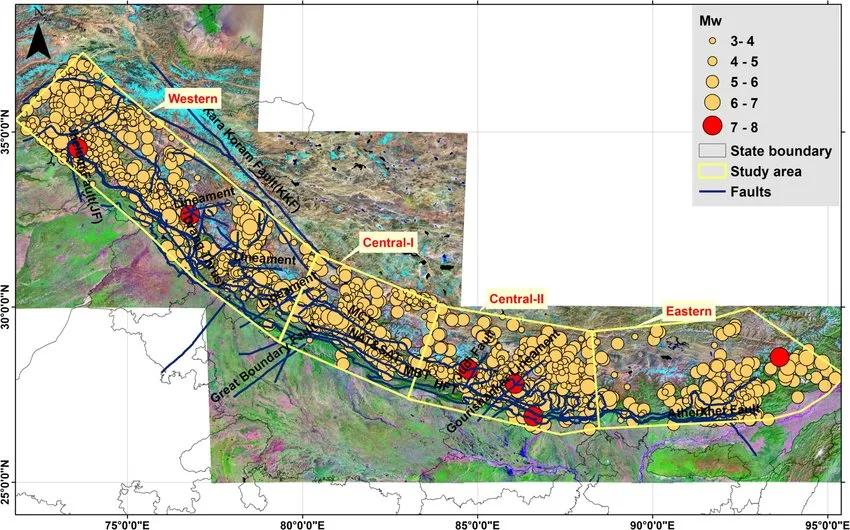New Delhi (The Hawk): Various organisations of Government of India are involved in seismic zonation mapping and regular monitoring for identification of high seismic risk zone prone areas across the Country in order to mitigate their effect.
The National Centre for Seismology under the Ministry of Earth Sciences monitors the earthquake activity in and around the Country on 24x7 basis with special emphasis to the Himalayan regions having high seismic potential. Wadia Institute of Himalayan Geology under the Department of Science and Technology has about 70 broadband seismograph stations operational in the Northwest and Northeast Himalaya for monitoring earthquake activities, evaluation of seismic hazards, and earthquake precursory studies. Since, an earthquake can trigger landslides, landslide susceptibility and vulnerability maps by incorporating tectonic activity based on machine learning algorithms have also been prepared.
The Indian Space Research Organisation (ISRO) has carried out landslide susceptibility zonation mapping along with Northwest and Northeast Himalaya. ISRO has also established a network of 30 Global Navigation Satellite System based Continuously Operating Reference Stations across Himalayan belt to monitor the process of crustal deformation. In addition to above, the Geological Survey of India (GSI) has carried out research and development studies with field validation across the landslide prone areas of the Country. GSI has also installed permanent Global Positioning System (GPS) stations in different parts of the Country with an aim to monitor plate movement and also map areas with strain in homogeneity. GSI has established Seismo-Geodetic Data Receiving and Processing Centre which receives and processes real time Seismo-Geodetic Data from Remote Broadband Seismic Observatories located in various parts of the Country.
The information on seismic activities recorded by these organizations gets disseminated to all stakeholders including state and central disaster management authorities for use in regional developmental planning of hill areas and further research studies for use in the management of seismic disasters in the Country.
In order to protect the environment including mountain ranges, the Government of India has adopted the National Environment Policy in 2006. The Policy recognizes the role of mountain ecosystems in maintaining the ecological balance of the region and emphasizes upon to promote appropriate land use planning and watershed management for sustainable development of mountain ecosystems. The Ministry of Environment, Forest and Climate Change has established the Govind Ballabh Pant National Institute of Himalayan Environment as a focal agency to advance scientific knowledge and to evolve integrated management strategies for conservation of biodiversity and natural resources in the Indian Himalayan Region. Among other initiatives, the National Mission for Sustaining Himalayan Ecosystem under Department of Science and Technology aims at evolving management measures for sustaining and safeguarding the mountain ecosystem.
The National Remote Sensing Centre has prepared a Landslide Atlas of India in 2023 that shows landslides occurred during 1998-2022 within the hilly regions of India. The database covers landslide vulnerable regions in 17 States and 02 Union Territories of India in the Himalayas and Western Ghats. This landslide database was used to rank 147 hilly districts of India in terms of their exposure to landslide risk in terms of key socio-economic parameters. The database also highlights the advanced techniques in landslide detection, modeling and prediction.
This information was given by Union Minister of State for Environment, Forest and Climate Change Shri Ashwini Kumar Choubey in a written reply in the Lok Sabha.

